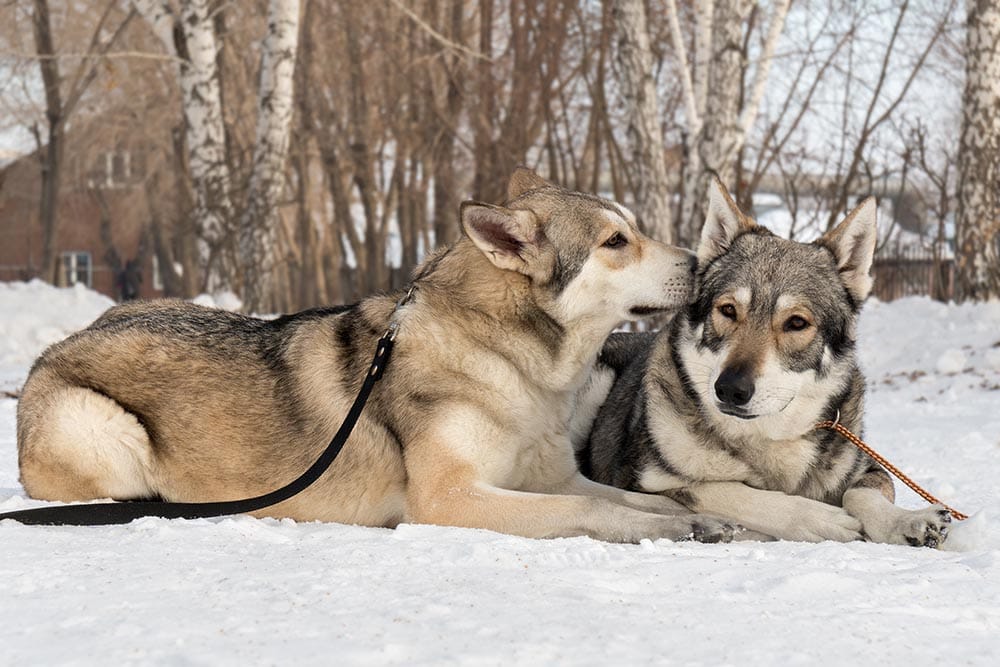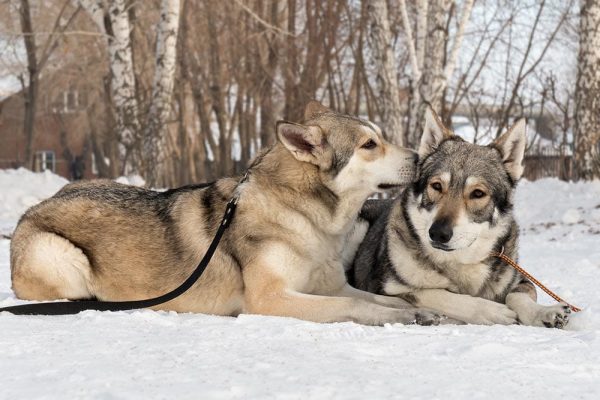Today, nearly 400 official breeds are recognized by various organizations, which doesn’t include mixed breeds. Where did all these dogs come from? Most purebred and designer dogs were developed from selective breeding, but what does this mean? Do we still do it today? Why or why not? Is it ethical? In this article, we will answer all those questions and more. Let’s get started.
Key Terms to Know
Before we discuss the science of selective breeding, here is a list of important terms to know. These terms will be referenced at various points in this article.
- Bloodline: A set of dogs that all share some blood and similar traits over more than one generation.
- Fix traits: Complementary traits for breeding that both parents can pass on to future generations.
- Gene pool: All the potential genetic material for an entire population or breed.
- Inbreeding: Breeding two dogs that are too closely related.
- Inheritable conditions: Conditions that can be passed from the parent to the puppy via genetics, such as hip dysplasia and allergies.
- Natural breeding: Dogs choose to mate without any human intervention.
- Popular sire effect: When a single sire is requested by many breeders, resulting in future generations with similar genetics.
- Remove traits: Unwanted traits from the parents that are removed from the gene pool.
- Reinforcement: Parents with similar skills that pass on desirable traits to puppies; often used for police dogs, hunting dogs, etc.
- Selective breeding: Dogs breed or mate with human intervention; this can be done through physical mating or artificial insemination.
- True breeding: Breeding two purebred dogs to create purebred puppies.
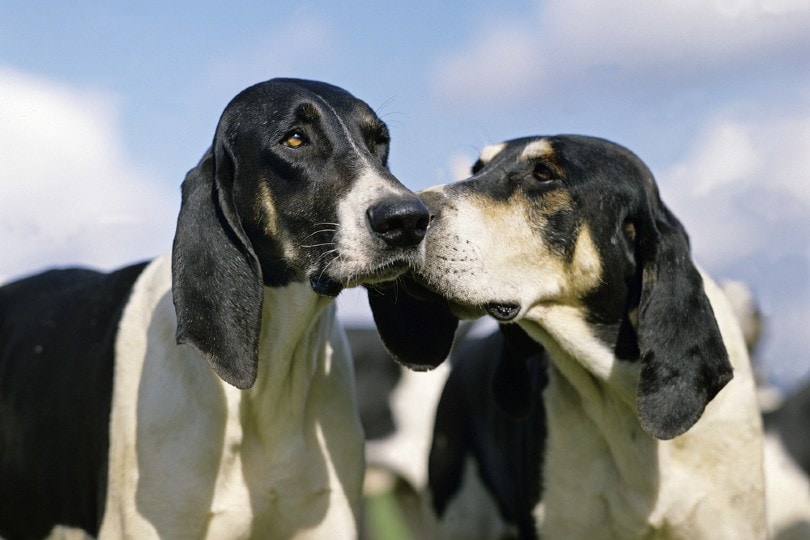
Selective Breeding in Dogs: Explained
Selective breeding is when people selectively choose which dogs will mate to produce puppies that meet their expected desires. In other words, humans dictate breeding so that certain traits, diseases, or characteristics are fixed or removed in the offspring. Selective breeding contrasts with natural breeding, when the dogs choose when, where, and with whom they mate.
Dogs naturally breed to fulfill an instinctual desire to produce, but selective breeding is normally done for a different purpose. As a result, selective breeding includes selecting a mate and controlling the timing with a particular purpose or trait in mind.
The 3 Reasons People Choose Selective Breeding in Dogs
There are quite a few reasons why people selectively breed dogs.
1. To Breed Purebreds
Some people practice true breeding, which is when the breeder mates two purebreds to create purebred puppies. Breeders typically use true breeding to produce show dogs.
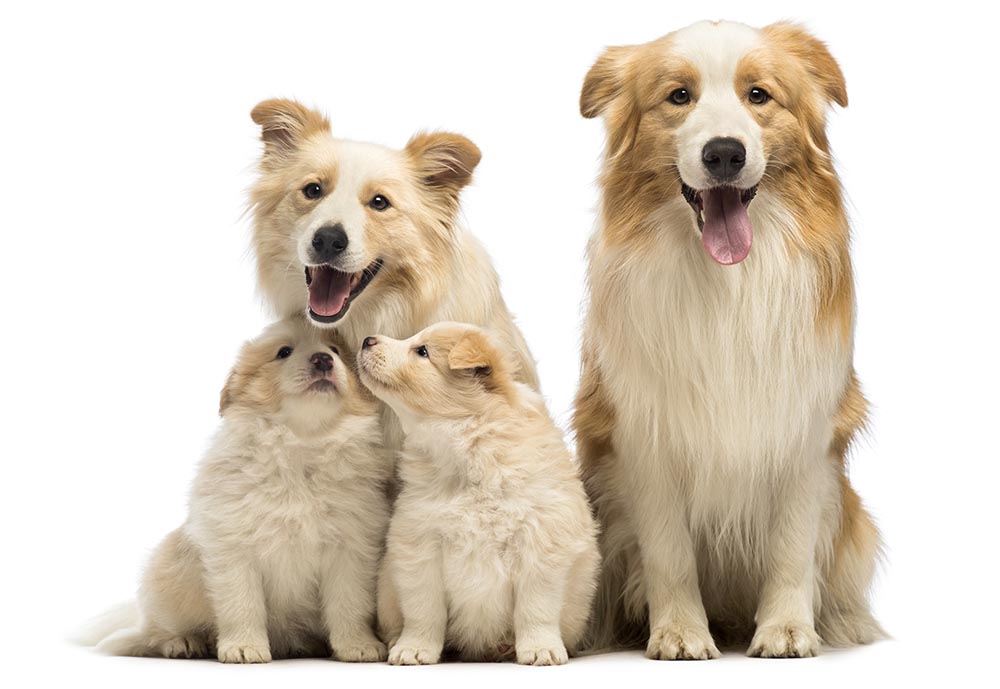
2. To Add or Remove Traits from the Population
Some breeders try to fix or remove traits to produce the healthiest or most capable dog. On the one hand, fixing traits occurs whenever you mate two dogs with the same genes so that their descendants are likely to have those genes as well. On the other hand, removing traits occurs whenever you breed two dogs without a certain trait so that the generations after don’t have it either.
As you would expect, traits are often removed whenever they are harmful or unsuitable for a specific purpose. For example, a breeder might remove traits related to inheritable conditions.
3. To Reinforce Certain Traits
People selectively breed dogs to reinforce certain traits, too. As you likely know, some dogs are bred for particular reasons, such as hunting, herding, or other purposes. They are bred so that the ideal traits remain.
Here are some examples of traits that are reinforced through selective breeding:
- Speed
- Reflexes
- Stamina
- Strong senses
- Trainability
- Size
- Strength
- Low gravity
- Agreeableness
How Does Selective Breeding Work?
Understanding selective breeding and why people do it is relatively straightforward, but how does it work? Some of these words and phrases may sound familiar if you have ever taken a biology course.
Genes Encode Certain Information
As you probably know, our genes make us who we are in many ways. For example, your hair color, eye color, and health conditions are all determined by your genes, which you get from your parents.
The same is true for your dog and all other animals. All dogs will receive one set of DNA from each parent. Breeders use this information to their advantage by breeding dogs based on the genes they carry.
Dominant vs Recessive Genes
Scientists classify genes as either dominant or recessive. The dominant traits will win out and show themselves in the offspring. Recessive traits, in contrast, are those that remain within the offspring but don’t show themselves. Even though the dominant trait is what you will see in the dog, the dog can still pass on recessive genes.
Often, breeders selectively breed dogs with particular dominant and recessive traits in mind. For example, two dogs with the same recessive trait will likely be bred if that trait is desirable. Breeding two dogs with recessive traits makes the offspring more likely to demonstrate the same trait. If the trait is mixed with a dominant trait, the recessive one will be overshadowed.
Control the Parents to Control the Outcomes
Even though several variables are at play, experienced breeders know how to control the parents to control the outcome of their offspring. In other words, they know what to look for in their parent dogs to create desirable offspring that sell.
To do this, most breeders will use a DNA test or other similar scientific tools to learn about the DNA of the dogs in question. This ensures that the dogs being bred meet their standards and do not have any unknown illnesses or other issues.
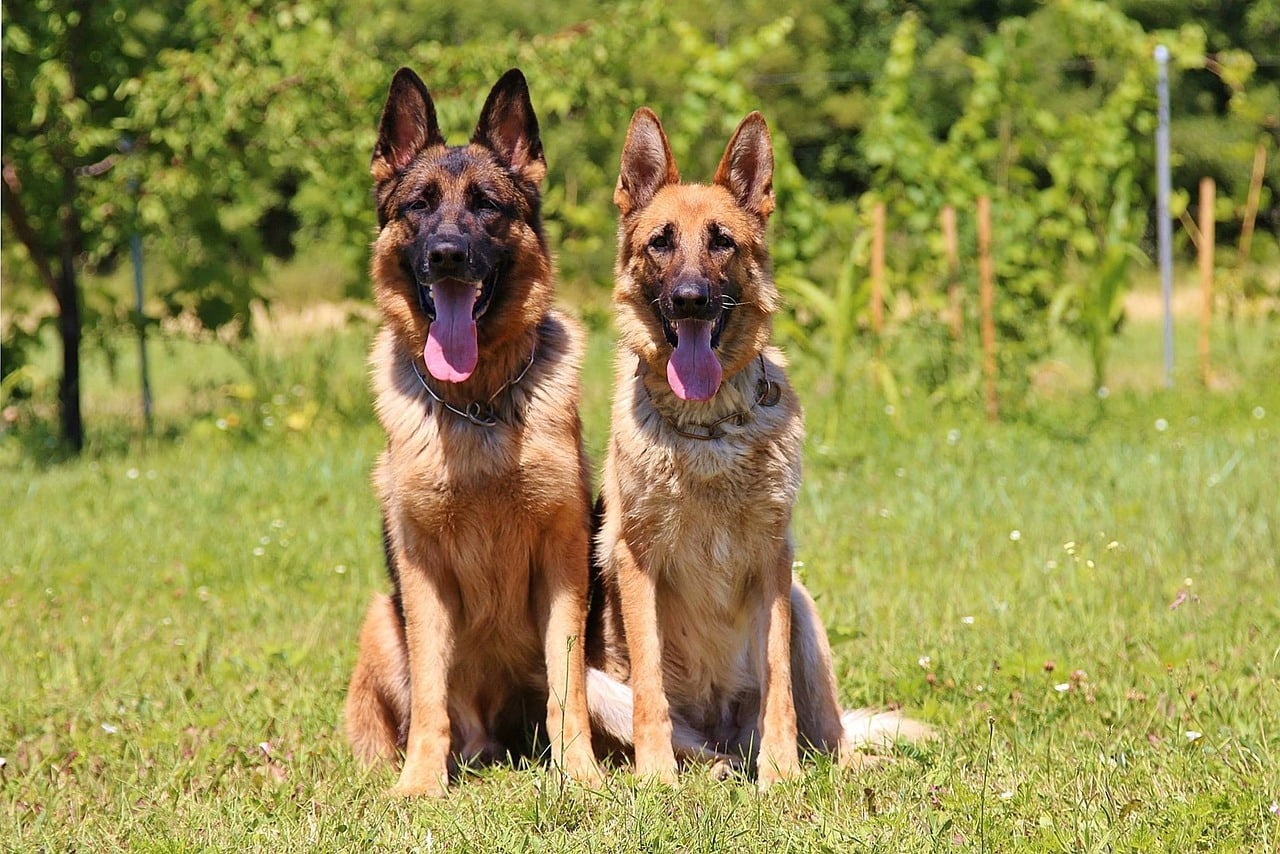
It’s Not an Exact Science
It’s important to note that even though selective breeding increases the chances of the ideal offspring being born, it does not guarantee it. That’s because genetics is not an exact science. You never fully know which traits will be passed on from parent to offspring. Furthermore, all the traits impact each other. Hence, the expression of specific traits may look different in the offspring than in the parent, even if the same traits are expressed.
The 3 Pros of Selective Breeding in Dogs
Even though selective breeding may sound superfluous to many people, it has a few benefits, both for people and the dog. Of course, most of the pros of selective breeding depend on the breeder’s ethical and responsible conduct.
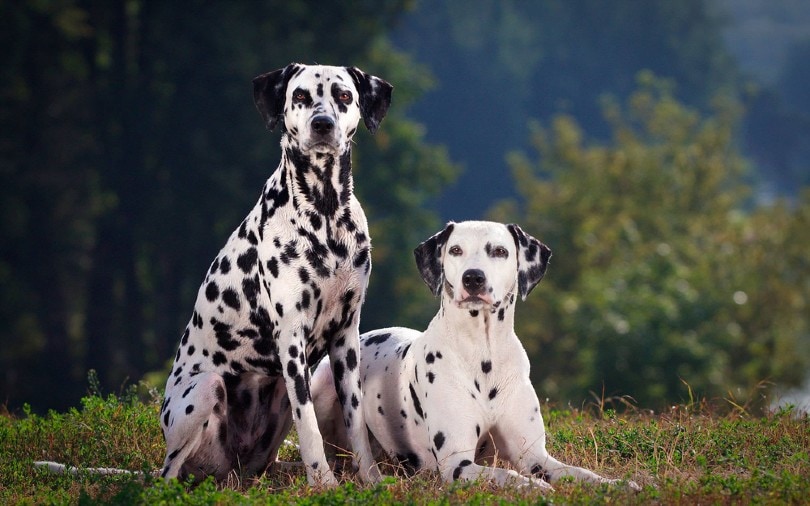
1. Reduces Inheritable Illnesses and Genes
Many diseases and illnesses are inherited from parents. Through selective breeding, breeders can breed out inheritable illnesses, creating healthier dogs and puppies. This benefit is great for dogs and people. Dogs are miserable when they’re sick or unhealthy, and people don’t like seeing sick dogs or paying high vet bills.
2. Makes Dogs Better at Their Jobs
Because selective breeding can reinforce certain traits, it can make dogs better at their jobs. For example, selective breeding can help hunting dogs, herding dogs, and police dogs by reinforcing stamina and other needed traits. Having these ideal traits is good for working dogs because it not only helps the dog succeed but also helps the dog survive.
At the same time, making dogs better at their jobs helps people. Herding dogs, for example, help shepherds and farmers keep their livestock protected and together. Even families benefit from selective breeding to increase certain traits. Traits for gentleness can be reinforced or increased through selective breeding. In other words, selective breeding helps dogs fill their role in the world, even if that role is just to bring you love and affection.

3. Create New Breeds
Of course, selective breeding also creates new breeds. Even though all dogs can technically mate with one another, it’s unlikely for some breeds to do so, such as a Great Dane and a Chihuahua. Through selective breeding, you can create offspring from two breeds that are unlikely to breed. As a result, their offspring are unique and cute.
Whenever new and highly sought-after breeds are created, organizations develop guidelines and breed standards. If the breed continues to be popular, an excellent bloodline can eventually be created too.
The 3 Cons of Selective Breeding in Dogs
Although selective breeding can be beneficial, it also has disadvantages.
1. Unethical Breeders
The biggest issue with selective breeding is unethical and irresponsible breeders. Although many breeders love their dogs and treat them like family, others are just in it for the money and practically torture their dogs. Unethical breeding can lead to abuse, death, unhealthy puppies, and other similar situations. For example, some unethical breeders inbreed to develop similar pups, leading to the same dangerous results.
When inbreeding occurs, mated dogs share much of the same genetic material, including illnesses. As a result, the offspring often have the disease or illness, even if both parents are healthy. That’s because the offspring is more likely to get the illness when both sets of their DNA express it.

2. Gene Pool Closes
Selective breeding can have downsides even when the breeders are responsible and ethical. One downside is that the gene pool closes. This happens for purebreds because only a limited amount of genes can go into the pool for the dog to still be considered purebred.
The issue with a closed gene pool is that there is a higher chance that the dog will experience illnesses and diseases. For example, many dogs with flat faces are more prone to respiratory illnesses. The only way to fix this problem is to insert new traits or genes into the gene pool. Although this is great for the dog’s health, it means that the dog won’t be purebred anymore.
3. Popular Sire Syndrome
Popular sire syndrome is a unique downside of selective breeding that many people are unaware of. This syndrome occurs whenever one male is requested by many breeders. When this happens, many offspring share a lot of genetic material, resulting in a less diverse gene pool down the line.
Hence, ancestors of the sire may breed, resulting in several inherited diseases and illnesses from unintentional inbreeding. Unfortunately, even ethical breeders may not be able to avoid this issue down the line.
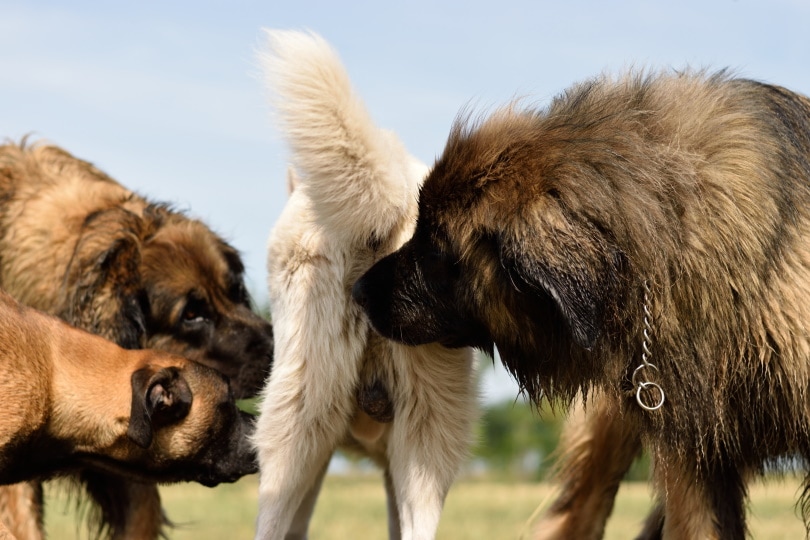
Is Selective Breeding in Dogs Ethical?
This question cannot be answered definitively since ethicality is not a science. Whether or not selective dog breeding is ethical depends on who you ask and in what situation. As you would likely expect, almost everyone agrees that selective dog breeding is unethical whenever the breeders are irresponsible, torturous, and abusive to the parent dogs. There isn’t much debate over that.
What about selective breeding that is done responsibly? Unfortunately, this is where the question gets a bit sticky. Many breeders are fans of selective breeding because it helps to keep dogs healthy, happy, and good at what they do. We believe selective breeding is ethical as long as the breeder is ethical and responsible.
However, some people would disagree and say that selective breeding is unethical because it forces dogs to mate when they don’t have a choice. Although this is a fair argument, we view that dogs don’t have much of a choice anyway since they breed purely due to instincts, not the desire for children, love, etc. Nevertheless, deciding whether selective breeding is ethical is completely up to you.
Final Thoughts
Once again, selective breeding is intentionally selecting mates so their offspring have desirable outcomes. It’s used to create purebred pups, new breeds, superior dogs, and other desirable outcomes by human standards. Even though selective breeding in dogs can have several issues, it is largely positive when undertaken by a responsible breeder. Selective breeding is ethical when the breeder takes full responsibility for the dogs and treats them with the respect and love they deserve. More so, it is only ethical when the breeder takes the time to do it correctly, resulting in less inbreeding and other dangerous situations for the dog.
Related read:
- Dog Color Genetics–Understanding the Basics
- Breeding Father to Daughter Dogs: Risks, Ethics, Consequences & FAQ
Featured Image Credit: yykkaa, Shutterstock
Contents
- Key Terms to Know
- Selective Breeding in Dogs: Explained
- The 3 Reasons People Choose Selective Breeding in Dogs
- How Does Selective Breeding Work?
- Genes Encode Certain Information
- Dominant vs Recessive Genes
- Control the Parents to Control the Outcomes
- It’s Not an Exact Science
- The 3 Pros of Selective Breeding in Dogs
- The 3 Cons of Selective Breeding in Dogs
- Is Selective Breeding in Dogs Ethical?
- Final Thoughts

